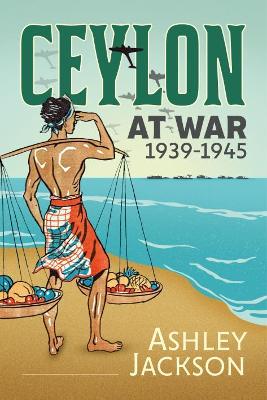War & Military Culture in South Asia
2 total works
Ceylon became a vital Allied and imperial bastion following the fall of Singapore. Forces were rushed to its defence in the dark days of 1942, because if the Japanese had managed to take the island, the sea lanes of the Indian Ocean, vital to imperial and Allied communications, would have been threatened. Furthermore, as traditional sources were lost to the Japanese, Ceylon became the Allies' main source of rubber, an essential material of war. Ceylon at War explains why the British War Cabinet considered the island to be strategically vital as it became a surrogate Singapore following Japan's dramatic conquest of South-east Asia and Burma. It documents the measures taken to defend the island and the flight of thousands of civilians and service personnel to its harbours as they fled in the face of Japanese forces fanning out across South-east Asia and the Dutch East Indies. The April 1942 Japanese raids on Colombo and Trincomalee, described by Churchill as 'the most dangerous moment of the war', are described, as are the concurrent naval manoeuvres off Ceylon's coast as the same Japanese fleet that had devastated Pearl Harbor sought to extinguish the Royal Navy in eastern waters. Ceylon's role as a base for imperial and Allied forces and headquarters of Admiral Lord Louis Mountbatten's South East Asia Command is explained, along with the transformations brought to the island by the war.
Table of contents:
Chapter 1 - The surrogate Singapore;
Chapter 2 - 'Refugee harbour': The flight to Ceylon;
Chapter 3 - Fortifying the island;
Chapter 4 - 'The most dangerous moment': The Japanese raids;
Chapter 5 - Life in Ceylon
Table of contents:
Chapter 1 - The surrogate Singapore;
Chapter 2 - 'Refugee harbour': The flight to Ceylon;
Chapter 3 - Fortifying the island;
Chapter 4 - 'The most dangerous moment': The Japanese raids;
Chapter 5 - Life in Ceylon
Of Islands, Ports, and Sea Lanes explains the operational and strategic importance of the ports and sea lanes of Africa and the Indian Ocean during the Second World War. In addition, it offers a novel account of the war in the Indian Ocean, a busy and vital theatre of military operations throughout the conflict, though one that is overlooked in most historical studies. An understanding of the significance of the Indian Ocean region, from imperial and strategic perspectives, helps bring unity to the Allied war effort in Africa, Asia, and the Middle East, and demonstrates how the highest levels of strategy depended on places, people, and infrastructure in faraway places of seemingly little consequence. The movement of goods and people by sea was central to the prosecution of the imperial and Allied war effort, and this was dependent upon ports and their facilities, together with troopships and merchantmen and the air and naval assets that protected them. The book offers a `how it worked' guide to the Empire's logistical system, and explains the interconnectivity of actions and events on land, sea, and air, detailing the indispensable role played by the ports and sea lanes of the African continent and the Indian Ocean, the British Empire's great connector.
Table of contents:
Introduction The British Indian Ocean world;
Chapter 1 - Ports, islands, and sea lanes in Africa and the Indian Ocean;
Chapter 2 - The role of Africa's ports and sea lanes;
Chapter 3 - The role of Indian Ocean islands;
Chapter 4 - German and Italian raiders and sea lane protection;
Chapter 5 - The consequences of Japanese aggression;
Chapter 6- Admiral Somerville and the reinforcement of the Indian Ocean;
Chapter 7 - Holding the ring;
Chapter 8 - The turn towards the offensive;
Chapter 9 - Victory Japan
Table of contents:
Introduction The British Indian Ocean world;
Chapter 1 - Ports, islands, and sea lanes in Africa and the Indian Ocean;
Chapter 2 - The role of Africa's ports and sea lanes;
Chapter 3 - The role of Indian Ocean islands;
Chapter 4 - German and Italian raiders and sea lane protection;
Chapter 5 - The consequences of Japanese aggression;
Chapter 6- Admiral Somerville and the reinforcement of the Indian Ocean;
Chapter 7 - Holding the ring;
Chapter 8 - The turn towards the offensive;
Chapter 9 - Victory Japan

